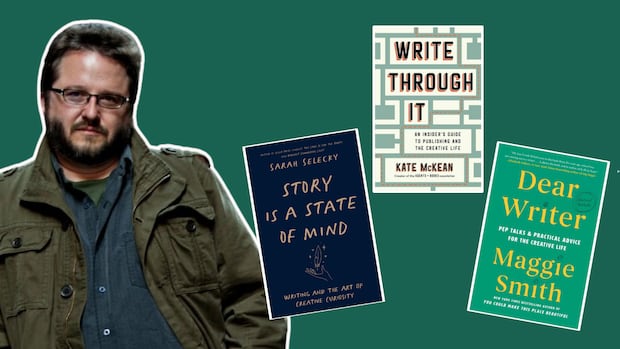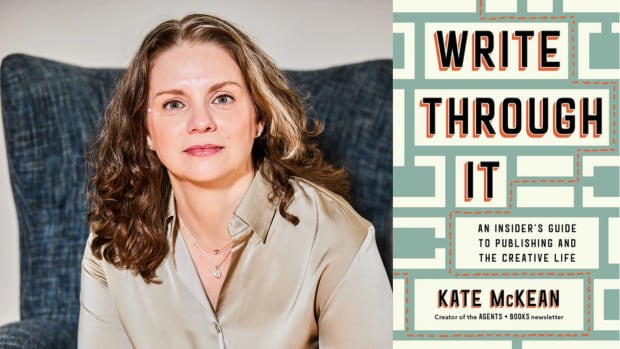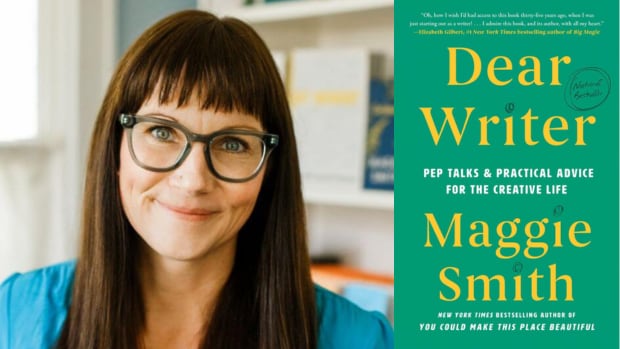Want to be step up your writing game? Robert J. Wiersema says to read these 3 books first

For many aspiring authors, finding a way into the publishing world can feel incredibly difficult, even outright scary.
Robert J. Wiersema, a writer and creative writing teacher at Vancouver Island University, says that reading books about the writing world can help.
Reading books about the craft of writing can be “centring” and show writers that others have gone through similar things — that “what you’re experiencing has been experienced before, you’re not alone,” he said.
The Next Chapter27:37Want to be a better writer? Read these books
Wiersema stopped by The Next Chapter to recommend three books that could take you from wanting to write, to actually doing it. Check them out below.
Story is a State of Mind by Sarah Selecky
In Story is a State of Mind, Sarah Selecky begins with what Wiersema refers to as a “centring meditation” and talks about the value of “embracing curiosity over cynisism” and “prioritizing, in some cases, the gut over the mind.”
“We’ve spent so long looking at the destructive myth of the self-destructive writer. That our creative types have to be tortured and anguished and subject to bad habits, and mean, and that’s just not true,” Wiersema said.
The book is a distillation of two decades of teaching and mentoring, pulling together the different parts of the author’s unique approach to the creative process.
Wiersema added while he does not tend to think of himself as a ‘holistic’ person, he highly recommends following Selecky’s advice and always starts his own writing day by taking a walk to clear his mind.
“I can vouch for just how effective that is,” he said.
Selecky is an Ontario writer and writing teacher. Her debut short story collection This Cake Is for the Party was a shortlisted for the Scotiabank Giller Prize and longlisted for the Frank O’Connor Short Story Award in 2010.
Write Through It by Kate McKean

The next book Wiersema suggested is Write Through it by Kate McKean. In the book, McKean writes about her work as a literary agent and the struggle of publication, drawing on two decades of experience.
Despite McKean’s success as a literary agent, she has written a number of books which she has not been able to get published so is familiar with both sides of the coin.
“This book sort of addresses something of the elephant in the room,” Wiersema said.
“Some writers are resistant to the idea of commerce. They want to be published, they want to be best-sellers, they want to have adaptations made of their work but they don’t want to look at the commercial side.”
The book is an “invaluable and up-to-date resource,” Wiersema said, “from someone who has been in the trenches on both sides of the writing/publishing divide.”
The first chapter is about writing a first draft but then the book shifts into editing the draft, finding an agent, submitting the book to publishers, and working with contracts.
“You can almost imagine it as being given the opportunity to sit down with an agent and ask her all the questions you might have about getting your book out into the world.”
Dear Writer by Maggie Smith

Dear Writer: Pep Talks and Practical Advice for the Creative Life by bestselling author Maggie Smith breaks creativity down into ten essential elements, which include things such as attention, wonder, tenacity, and hope.
The book is a series of short essays followed by writing prompts. Though it includes essays on metaphors and word choice, it also emphasizes the importance of “comfort.”
Dear Writer states that “taking care of yourself as a whole human being” is incredibly important to taking care of one’s self as a writer.
She also makes it clear that people do not need to write every day. Pragmatically, she says, writing every day is simply not possible for many people — particularly for women writers.
“It completely overlooks the reality of most writers’ lives.”
Instead, she stresses that writers should “commit to doing at least one thing in service of your writing every day,” Wiersema said.
Source link



